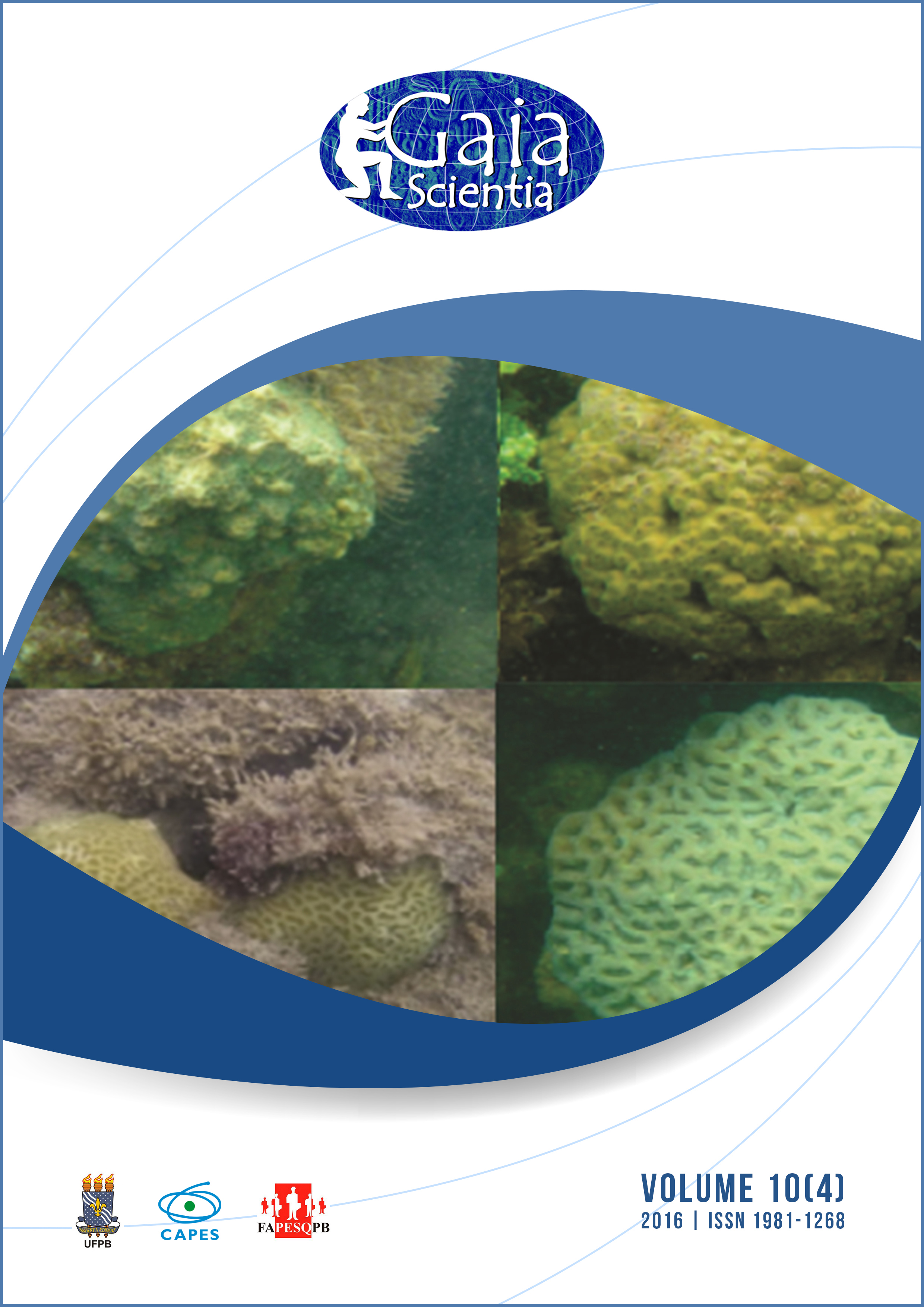Thermal stability of amino acids in meals and feeds used in shrimp farming
Resumo
The Brazilian shrimp farming uses mainly commercial feed for shrimp nutrition. This choice occurs because of the advantages related to convenience and good adaptation of Litopenaeus vannanmei to feed intake.Thus, the quality of feed is a determining factor for maximum performance of the shrimp farms, making the right selection of suppliers and control of the storage conditions as ways to prevent contamination and spoilage of feed.The objective of this study was to evaluate the stability of amino acids in meals and commercial feed with different protein levels, subjected to high-temperature storage.The samples were exposed to temperature of 50 ᴼ C and evaluated every 5 days for 30 days.The analyses of the degradation of amino acids were performed using an elution gradient in HPLC system.In evaluated meals it was observed that valine and arginine were the amino acids that suffered greater loss during the experiment and histidine and alanine suffered less degradation.Significant difference was observed in the content of all amino acids analyzed after exposure of the feed to the temperature of 50 º C; with reduce in values of its amino acid content.The results obtained in this study indicate that meals and feed exposed to elevated temperatures significantly reduced the content of its amino acids.Downloads
Referências
Amaral R, Rocha IP and Lira GP. Alimentação de camarões e consumo de alimentos na carcinicultura: a experiência brasileira. Revista da Associação Brasileira de Criadores de Camarão, n. 2, v.5,p 35-44, 2003.
Barbiere Junior RC and Ostresky Neto A. Camarões marinhos (reprodução,maturação e larvicultura). Aprenda Fácil, 2001, 351p.
Buedo AP, Elustondo MP and Urbicain MJ. Amino acid loss in peach juice concentrate during storage. Innovative Food Science and Emerging Technologies. n.1, p. 281–288, 2001.
Bunka F, Hrabe J and Kracma S. The effect of sterilization on amino acid contents in processed cheese. International Dairy Journal, Barking,v.14, n.9, p.929-931, 2004.
Carneiro Sobrinho RN. Camarão marinho: oportunidades de investimento no Maranhão. Banco do Nordeste, 2003,134p.
Carneiro Sobrinho RN. Camarão marinho: oportunidades de investimento no Maranhão. Banco do Nordeste, 2003, 134p.
Coultate TP. Alimentos: a química de seus componentes. 3. ed. Porto Alegre: Artmed, 2004. 368p.
Creswell D and Bedford M. High pelleting temperatures reduce broiler performance. Proceeding of the Australian Poultry Science Symposium, n.18, p.1–6, 2006.
De La Cruz MC, Erazo G and Bautista MN. Effect of Storage Temperature on the Quality of Diets for the Prawn, Penaeus monodon Fabricius.Aquaculture, n.80, p.87-95, 1989.
Adeyeye, E.I.; Akinyeye, R.O.; Ogunlade, I.; Olaofe,O.; Boluwade, J.O. Effect of farm and industrial processing on the amino acid profile of cocoa beans. Food Chemistry, n. 118, p.357–363, 2010.
Espe M and Lied E. Fish silage prepared from different cooked and uncooked raw materials: Chemical changes during storage at different temperatures. Journal of the Science Food and Agriculture, v. 79, p. 327-332, 1999
Friedman M. Food browning and its prevention. Journal of Agricultural and Food Chemistry, n. 44, p. 632 – 653, 1996.
Hathaway IL, Young FD and Kiesselbach TA. The effect of drying temperature upon the nutritive value and commercial grade of corn. Journal of Animal Science, v.11, p.430, 1952.
Heu M. Components and nutritional quality of shrimp processing by-products. Food Chemistry, v.82, n.2, p.235-342,2003.
Kenny M and Flemming E. 2006. Optimising broiler performance – The role of physical feed quality. Proceeding of the Australian Poultry Science Symposium,n.18, p.25–29, 2006.
Kristensen D, Hansen E, Arnda A, Trinderup RA and Skibsted LH. Influence of light and temperature on the colour and oxidative stability of processed cheese. International Dairy Journal, n.11, p. 837 – 843, 2001.
Marty BJ and Chavez ER. Ileal digestibilities and urinary losses of amino acids in pigs fed heat processed soybean products. Livestock Production Science, v.43, p.37-48, 1995.
NATIONAL RESEARCH COUNCIL - NRC. Nutrient requirements of poultry. 9.ed. Washington, D.C.: National Academy Press,1994. 155p.
Pickford JR.. Effects of processing on the stability of heat labile nutrients in animal feeds. In: Garnsworthy, P.C., Haresign, W., Cole, D.J.A. (Eds.), Recent Advances in Animal Nutrition. Butterworth-Heinemann, Oxford, UK, p. 177–192, 1992.
Schär W and Bosset JO. Chemical and physico-chemical changes in processed cheese and ready-made fondue during storage. A review. Lebensmittel Wissenschaft und Technologie, 35, 2002, s. 15 – 20.
Silversides FG and Bedford MR. 1999. Effect of pelleting temperature on the recovery and efficacy of a xylanase enzyme in wheat-based diets. Poultry Science,n.78, p. 1184–1190, 1999.
SINDIRAÇÕES. Setor de alimentação animal. Boletim informativo do setor. Disponível em:
http://sindiracoes.org.br/wp-content/uploads/2012/05/sindiracoes_boletim-informativo-versao-portugues-atual maio2012.pdf.
Thomas M and Van Der Poe1 AFB. Physical quality of pelleted animal feed. Criteria for pellet quality. Animal Feed Science Technology, n. 61, P.89- 112, 1996.
Waldige V and Caseiro AA. Indústria de rações: situação atual e perspectivas. 2004.










